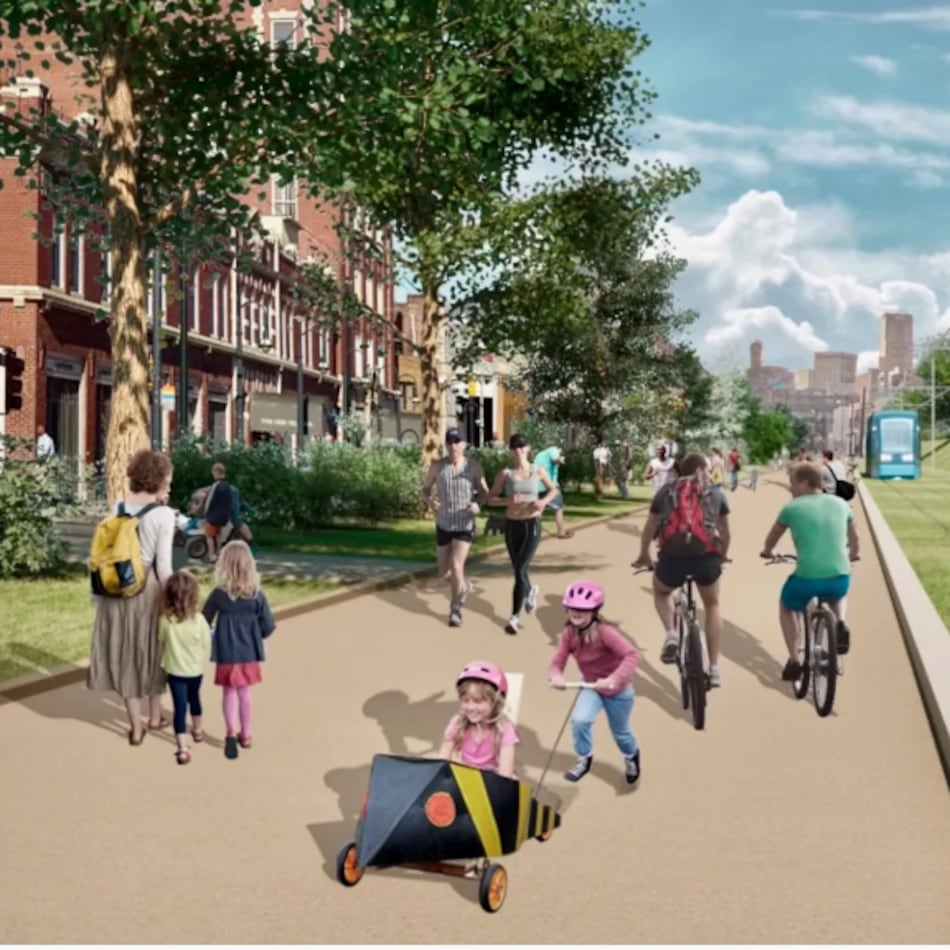Some of the District of Columbia’s homeless residents were packing their belongings Thursday before expected sweeps to clear out remaining encampments around the nation's capital, part of President Donald Trump's federal takeover of policing in the city.
Trump said this week that homeless people will be moved far from the city in his crackdown on crime. But details of the plan to do so are unclear.
Washington’s status as a congressionally established federal district gives Trump the opportunity to push his tough-on-crime agenda. It's prompted concern from advocates and others who say there are better ways to address homelessness than clearing encampments and leaving their occupants worrying about where they go.
Here’s a look at what we know and what questions remain about how Trump’s actions will affect the city's homeless population:
What's happening to encampments?
Near the Institute of Peace on Thursday morning, AP journalists saw about a dozen homeless D.C. residents packing their belongings. Items weren’t being forcibly thrown out by law enforcement, but an earth mover dug out and scooped away the remains of encampments, depositing them into the bed of an idling truck.
Yards away, several protesters held signs, some critical of the Trump administration. Volunteers from some of the agencies around the city that help homeless people were on hand, and advocates said they expected law enforcement officers to fan out across D.C. later Thursday to take down any remaining homeless encampments,
Amber W. Harding, executive director of the Washington Legal Clinic for the Homeless, said she believed that “federal law enforcement will begin systematically rounding up and arresting unhoused people." She believed officers would ask people to move on or would “offer shelter,” arresting people if they refused either directive.
“We do not have enough shelter beds for everyone on the street,” Harding said. “This is a chaotic and scary time for all of us in D.C., but particularly for people without homes.”
Lucho Vásquez, executive director of the Coalition for the Homeless, said his group was “focusing all energies on opening and operating temporary facilities” for anyone in need of emergency shelter, food or other resources after the removals.
Where will the city's homeless people be taken?
It's not entirely clear.
Trump wrote on his social media site before Monday’s news conference announcing the takeover that homeless people will have to leave immediately. “We will give you places to stay, but FAR from the Capital,” he posted.
Asked this week where homeless people would be relocated, White House press secretary Karoline Leavitt said local police and federal agencies would “enforce the laws that are already on the books,” which, she said, “have been completely ignored.”
Citing a city regulation that she said gives local police “the authority to take action when it comes to homeless encampments,” Leavitt said homeless people “will be given the option to leave their encampment, to be taken to a homeless shelter, to be offered addiction or mental health services.” Those who refuse “will be susceptible to fines or to jail time.”
In the past five months, U.S. Park Police have removed 70 homeless encampments, giving the people living in them the same options, she said. As of Tuesday, Leavitt said only two homeless encampments remained in district parks maintained by the National Park Service and would be removed this week.
How many homeless people are in Washington?
It is difficult to obtain accurate counts of homeless populations.
On one day at the end of each January, municipal agencies across the United States perform a “point-in-time” count aimed at capturing the total number of people in emergency shelters, transitional housing or without any housing.
The 2025 count in the district put the total at 5,138 adults and children, a 9% decrease compared with the year before, according to Democratic Mayor Muriel Bowser.
What are city officials doing for the homeless?
District officials said Tuesday they were making additional shelter space available.
Kevin Donahue, the city administrator, said outreach workers were visiting homeless encampments and the city has a building available that could house as many as 200 people, if needed.
Donahue made the comments during a conversation with community advocates and Bowser. The conversation was broadcast on X.
He said the outreach would continue through the week with a “greater level of urgency.”
Bowser said that when Trump sees homeless encampments in the city it “triggers something in him that has him believing our very beautiful city is dirty, which it is not.”
What are people in Washington saying?
Washington residents emphasized reductions in crime in recent years and concerns over the removal of homeless encampments in interviews Tuesday criticizing the federal takeover of the city’s police department.
Jeraod Tyre, who has lived in the city for 15 years, said “crime has been slowing down lately” and argued that federal troops would only escalate tensions because they do not have “relationships with the people in the community” like local police do.
Sheiena Taylor, 36, said she is more fearful as a result of the presence of federal forces in the city where she was born and raised.
Taylor said she has seen federal officers around her home and on the subway and worries about their targeting of young people and people experiencing homelessness.
“Being homeless isn’t a crime,” she said, emphasizing the need for solutions to the root causes of homelessness or crime rather than policing.
In several spots across the city, AP journalists talked to homeless people who were being told either by federal law enforcement officials or advocacy groups to pack up tents and belongings from parks and other public spaces before more official removal measures. Some expressed fear and anxiety about what might be coming.
___
Associated Press writers Christine Fernando in Chicago, Mike Balsamo and Darlene Superville; video journalists River Zhang and Nathan Ellgren; and photographer Jacquelyn Martin contributed to this report.
___
Kinnard can be reached at http://x.com/MegKinnardAP
The Latest
Featured


